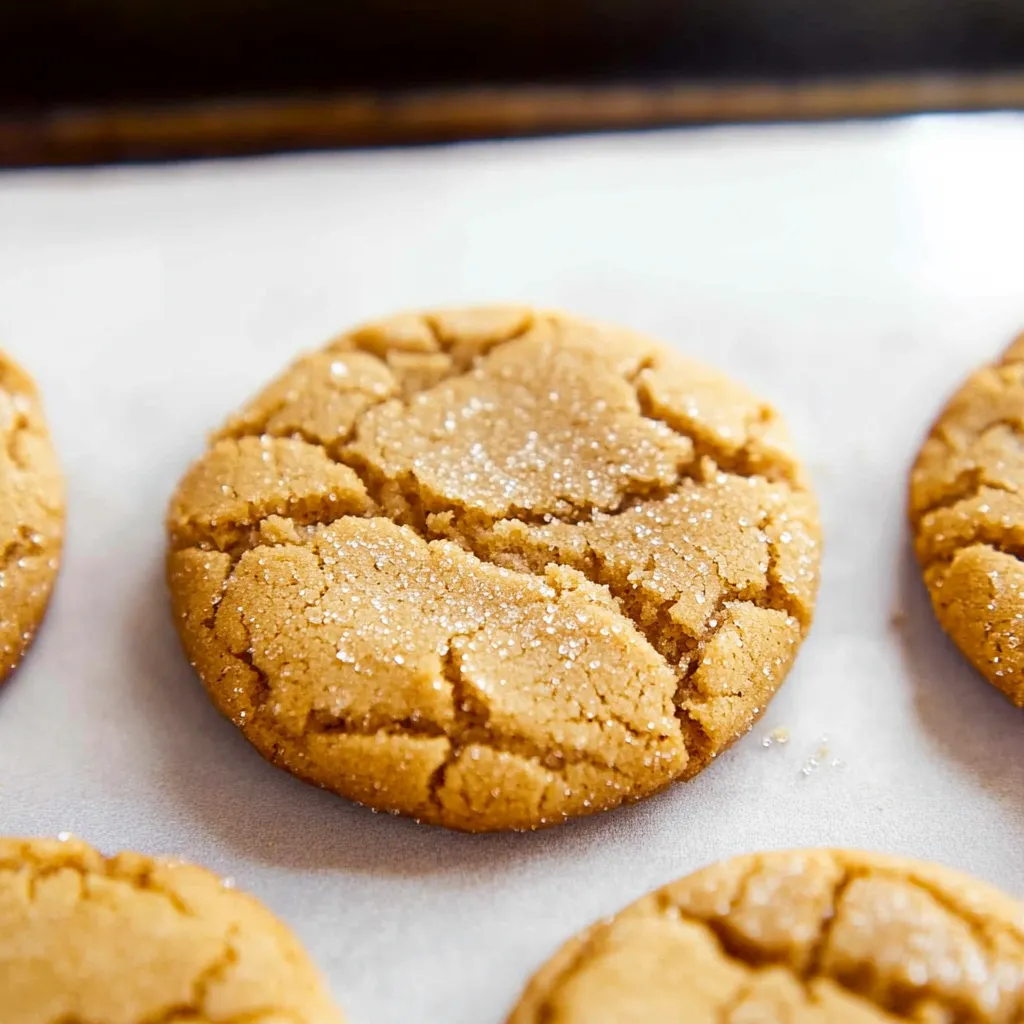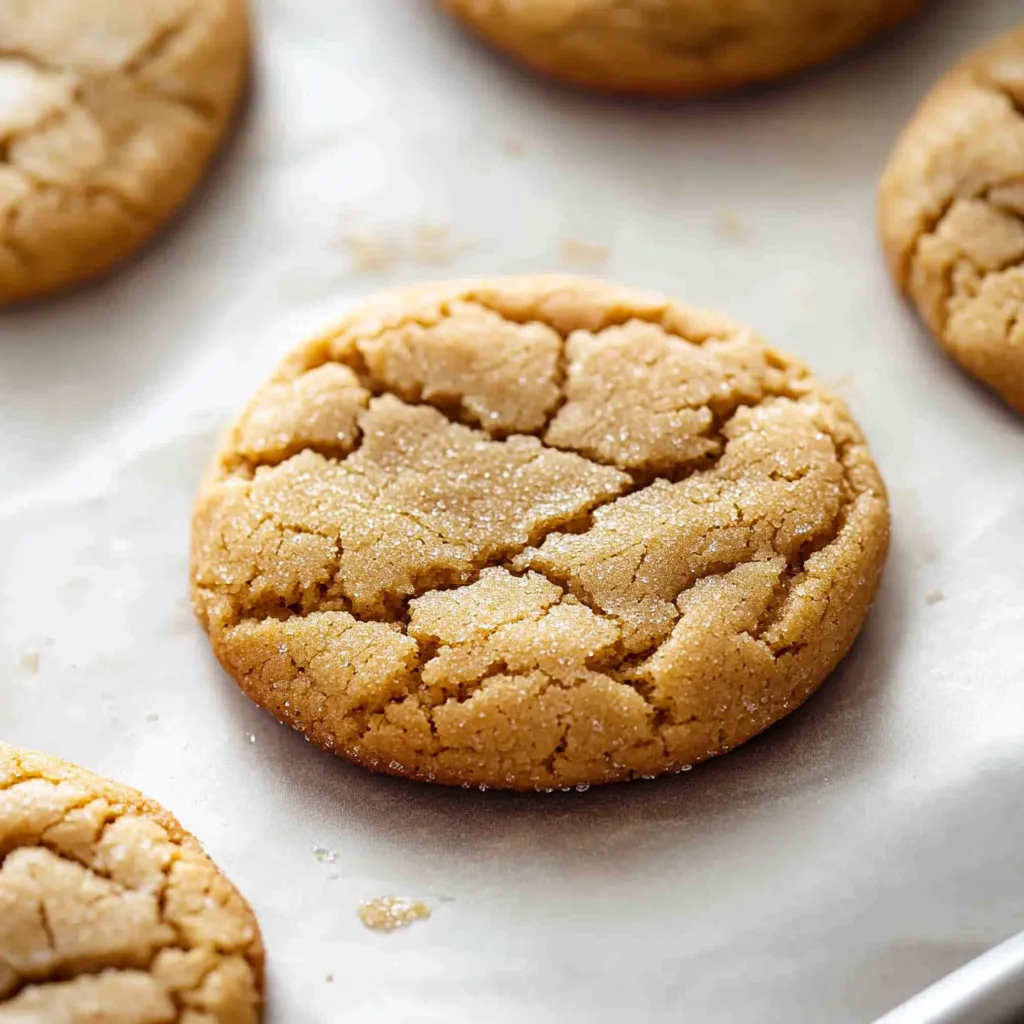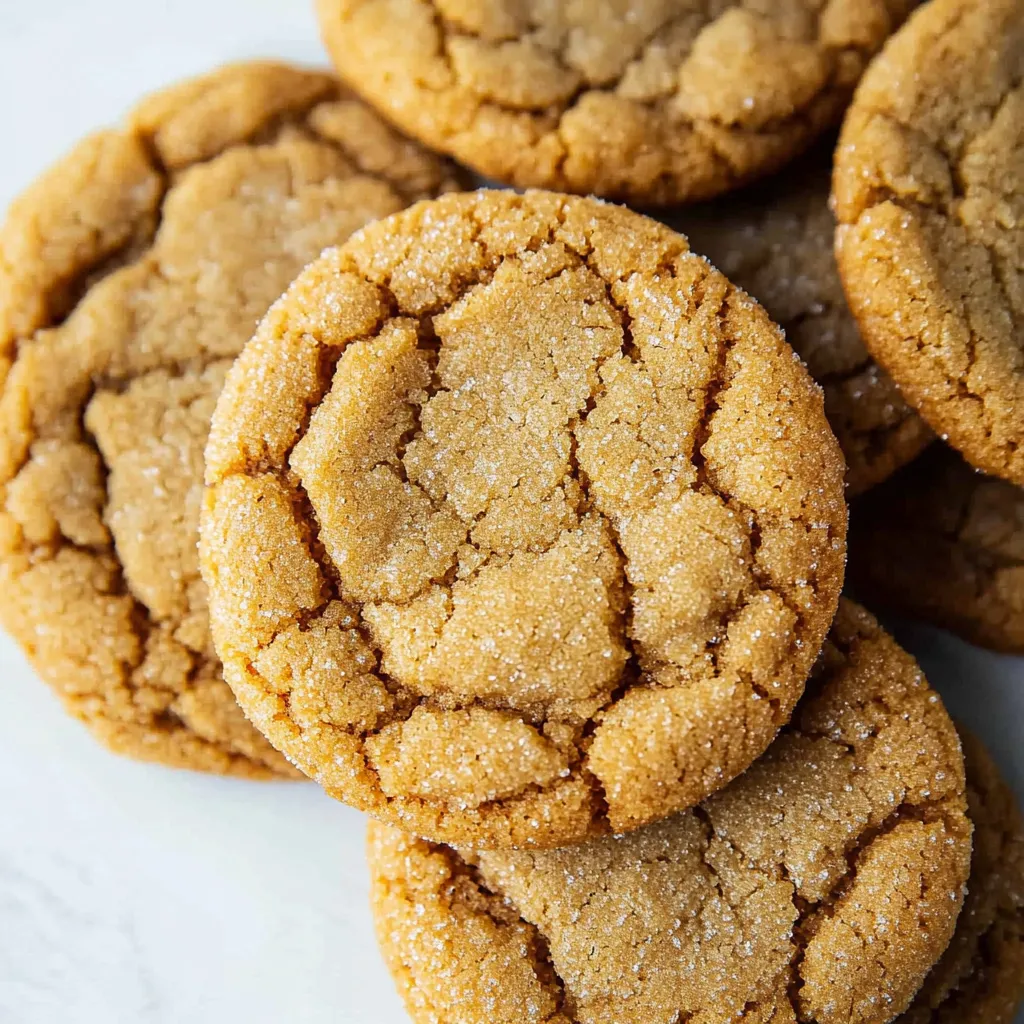 Pin it
Pin it
Brown sugar cookies meld rich caramel flavors with soft, chewy textures and distinctive crackly tops. These buttery delights offer a perfect alternative to traditional sugar cookies with their deeper, more complex flavor profile that requires no icing to shine.
I bake these cookies whenever company arrives unexpectedly or when my sweet tooth demands satisfaction without extensive prep. The way they fill the kitchen with their warm, buttery aroma while baking makes the experience almost as enjoyable as eating them.
Cookie Building Blocks
- Unsalted butter: Should be high quality with at least 82% butterfat content for optimal flavor and texture. Allow it to soften naturally at room temperature for 30 minutes before beginning. Half will be transformed into nutty brown butter while the other half provides structure.
- Brown sugar: Contains molasses which adds incredible moisture and chewiness. Light brown sugar gives a subtle caramel undertone while dark brown sugar creates deeper, more complex flavor with stronger molasses notes. Either works beautifully depending on your preference.
- Large egg plus an additional egg yolk: Creates the perfect balance of structure and richness. The extra yolk significantly improves chewiness and provides a velvety mouthfeel that makes these cookies exceptional.
- Pure vanilla extract: Enhances the warm flavor profile. Look for real vanilla without artificial additives. Madagascar bourbon vanilla works particularly well with the brown sugar notes.
- All purpose flour: Provides structure while keeping cookies tender. Unbleached flour contains more protein which helps cookies maintain their shape while developing proper chewiness.
- Baking soda: Reacts with the acidic molasses in brown sugar, creating the signature rise that later collapses into beautiful crackling surfaces.
- Fine sea salt: Balances sweetness and enhances every other flavor. Never skip this ingredient as it transforms one-dimensional sweetness into complex, balanced cookies.
Baking Instructions
- Browning The Butter:
- Place half your butter in a light colored saucepan over medium heat. Watch carefully as it melts, then foams, and finally begins turning amber with a nutty fragrance. Immediately transfer to a bowl (including those flavorful brown bits) and allow it to cool slightly before proceeding.
- Mixing The Dough:
- Combine your cooled brown butter with remaining softened butter and brown sugar in a large mixing bowl. Beat thoroughly with an electric mixer until the mixture becomes light and creamy, approximately 2-3 minutes. Incorporate egg, additional yolk, and vanilla extract, continuing to mix for another full minute until completely integrated.
- Adding Dry Ingredients:
- Introduce flour, salt, and baking soda to your wet mixture. Mix carefully while scraping down the sides of your bowl to ensure everything combines evenly. The resulting dough should look soft but cohesive. Transfer your bowl to the refrigerator and allow the dough to chill for at least 30 minutes.
- Shaping And Baking:
- Preheat your oven to 350°F and prepare baking sheets with parchment paper. Use a cookie scoop to portion dough into uniform balls, placing them at least 2 inches apart on your prepared sheets. These cookies spread substantially during baking. Bake for approximately 10 minutes until edges turn golden while centers remain soft.
- Cooling Process:
- Allow cookies to remain on the baking sheet for 3-5 minutes after removing from the oven. They continue setting during this time and will be too fragile to move immediately. After this initial cooling period, transfer carefully to a wire rack to complete cooling.
 Pin it
Pin it
My family particularly enjoys the deep caramel notes in these cookies. My sister, who typically avoids sweets, requests these specifically when visiting because they offer complexity beyond simple sweetness. The brown butter element creates a sophisticated flavor profile that appeals even to discerning palates.
Cookie Flavor Enhancers
The brown butter technique transforms these cookies from good to extraordinary. By cooking butter until its milk solids caramelize, you create complex toffee notes that permeate the entire cookie. This five-minute process delivers disproportionate flavor rewards for minimal effort.
Achieving Perfect Texture
Achieving perfect texture requires precise timing. Underbaking slightly ensures cookies remain soft in the center while developing those desirable crisp edges. Look for golden edges with centers that appear slightly underdone when removing from the oven.
Consider Batch Size
Consider batch size when preparing these cookies. The dough freezes exceptionally well, allowing you to bake only what you need. Form dough balls, freeze on a tray until solid, then transfer to freezer bags for storage up to three months. Bake directly from frozen, adding just 1-2 minutes to the baking time.
Delicious Variations
Light versus dark brown sugar creates noticeably different cookies. Light brown sugar produces a milder, more traditional cookie while dark brown sugar creates intensely flavored cookies with stronger molasses presence. Try splitting the difference by using half of each type.
Keeping Them Fresh
Store completely cooled cookies in airtight containers at room temperature for optimal texture. Place parchment paper between layers to prevent sticking. They maintain perfect chewiness for up to five days, though rarely last that long in most households.
Freezing and Refreshing
Freezing works beautifully with these cookies, either as dough or baked cookies. Baked cookies freeze well for up to three months when properly wrapped. Allow them to thaw at room temperature while still wrapped to prevent condensation from making them soggy.
 Pin it
Pin it
These brown sugar cookies represent comfort baking at its finest. Their unpretentious appearance belies complex flavors that surprise and delight with every bite. When I serve these alongside coffee after dinner, conversation inevitably pauses briefly as everyone enjoys that first perfect bite. Sometimes the simplest recipes produce the most memorable results.
Frequently Asked Questions
- → What's the difference between using light vs dark brown sugar?
- Dark brown sugar contains more molasses, giving a deeper caramel flavor. Light brown sugar creates a milder taste. Using a mix provides balanced flavor.
- → How do I know when butter is properly browned?
- Properly browned butter turns amber golden in color and develops a nutty aroma. It takes 3-5 minutes of cooking after melting.
- → Can I freeze the cookie dough?
- Yes, you can freeze the dough for up to 3 months. Form into balls, freeze on a tray, then transfer to a freezer bag.
- → Why did my cookies spread too much?
- This could be due to butter being too warm, insufficient flour, or not chilling the dough long enough. Adding a bit more flour and longer chilling helps.
- → How should I store these cookies?
- Store in an airtight container at room temperature for up to 5 days. They can also be frozen for up to 3 months.
